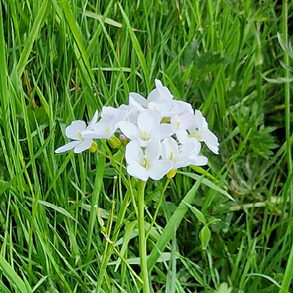Why are wildflower meadows important?
- Maryann & Martin
- Jun 12, 2023
- 3 min read
The longevity of our wonderful Green Farm is so important to us. Conservation work and our love of natural wildlife sees us constantly striving for better farming practices and today taking a closer look at natural ecosystems and answering the question, why are wildflower meadows important?

A decline in UK wildlife
We all know that, in England, we have lost a huge amount of biodiversity over the last century and the most recent State of Nature report, published in 2019, suggests there has been a 13% decline in the average abundance of wildlife in the UK since the 1970s. Much of this is caused by loss of habitat to commercial farming and construction. In farming, the focus on “yield”, encouraged by the market, successive governments and various subsidy plans has driven the move to mono-culture farming; large acres of the same crop grown by heavy mechanical and chemical use.
Data suggests there has been a 13% decline in the average abundance of wildlife in the UK since the 1970s.
The benefits of wildflower-rich meadows
Wildflower-rich meadows were once a common part of the farmed landscape; however, many have been converted to arable cropping, re-seeded, or lost to road or house building. Wildflower-rich meadows were originally created by farming to produce winter food for livestock. The wide range of flowering plants and grasses provides a highly nutritional crop, with an increased protein and mineral content in the forage. Well-managed meadows support a wide range of plants, fungi, insects, reptiles, and ground nesting birds such as skylarks, curlews, meadow pipits and yellow wagtails.
Some of these grasslands support an amazing number of wildflower species as well as providing habitats for many species of birds, invertebrates, amphibians, and mammals. They provide very important supplies of pollen and nectar for bumblebees and other insect pollinators. However, we have lost 97% of our wildflower meadows since the last war.
So much pasture these days has also followed the arable trend in the drive for yield and are constantly ploughed and re-sown as a monoculture of rye grass grown fast with the application of artificial fertiliser (NPK – nitrogen, phosphorus, and potassium). This produces plenty of hay or silage, but no habitat for wildlife and, in doing so, severely reduces the nutritional value of the fodder for the livestock.
The positive values of plant diversity
Wildflower meadows not only look pretty, but having a large selection of different species has some important values:
Different plant species have different root depths which brings a variety of nutrients into the meadow
The long roots of some of the species allow water to penetrate deep into the soil making the meadow more resilient to drought
Clovers will fix nitrogen into the soil, alleviating the need for artificial fertiliser
Some species have mild medicinal effects, particularly for ruminant digestive systems, producing healthier cattle and sheep
Different species set flowers at different times, providing longer seasons for pollen to be available to pollinators – bees, wasps etc.
These also provide seeds over extended periods in the year, often when food sources can otherwise be scarce for birds
Diversity of plants is achieved by careful management of the meadow, while wildflower meadows in particular require nutrient poor soil. This is not because the plants themselves can’t thrive in a nutrient rich environment, but they can’t compete with the stronger grasses that absolutely need plenty of nutrients. Grazing cattle in a managed way is typically all the input that is required!
Strategic cattle grazing benefits biodiversity
We have a short and sweet cattle-grazing strategy here at Green Farm – cattle and sheep and nothing artificial! We are also in our 3rd year of “mob grazing” our cattle; constantly keeping them moving forwards across the meadows with the use of electric fences so that the grass grows lush and is only partially eaten. They don’t return to a field for 60 – 70 days, giving the grasses plenty of time to recover. The improvement in biodiversity is already easy to see with many more plant species evident.
Cattle and sheep and nothing artificial!

So next time you are wandering through our beautiful meadows, take a closer look - the variety of plant and insect life is astounding! We’ll happily give you a guided tour, just ask when you make your booking.
You can read more about our values and farming principles here.













